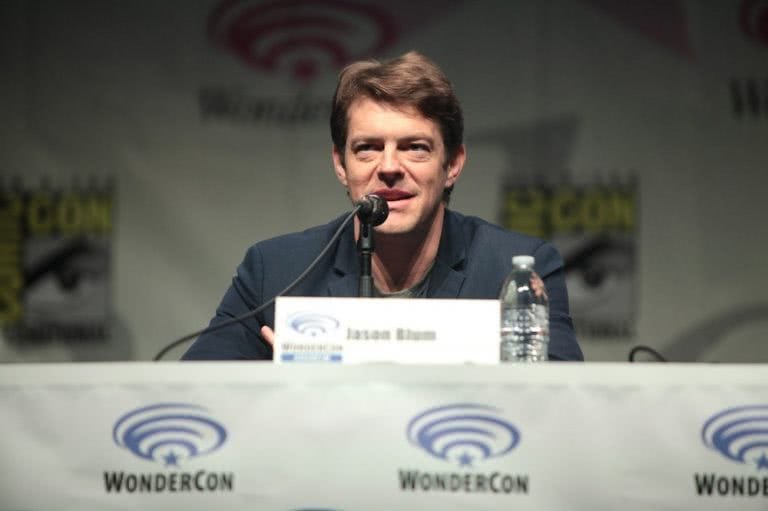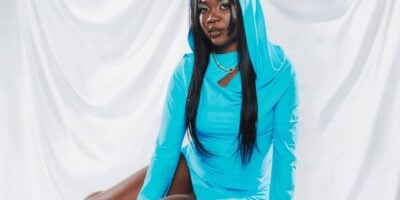Over 40 years have passed since Halloween’s infamously non-verbal serial killer Michael Myers escaped from a psychiatric institution and returned to the ‘burbs of Haddonfield, Illinois. He wielded nothing more than a modified Captain Kirk mask and a signature slow, yet steady walking pace that terrified audiences. At the time of shooting, its co-writers – who were partners at the time – John Carpenter and the late Debra Hill had no idea the legacy that their 1978 slasher would leave behind.
In fact, Carpenter was more interested in making Westerns; his general approach to the film went along the lines of ‘if it’s a flop, it’s a flop; if it’s a hit, well, great.’ Having a budget of just $200,000 to work with, Halloween’s lead actress Jamie Lee Curtis was paid a total cut of just $8000. But the innocent, yet undeniably resilient character would ultimately launch the actresses’ career – one that proved similar to that of her mother Janet Lee, who got her break in Hitchcock’s Psycho – and inspire a wave of slashers that followed Halloween.
Eleven Halloween films have been made over the last four decades, but Blumhouse Productions’ follow up to the original film effectively scrapes the slate clean. There’s no indication that Myers and Strode are siblings, and of course, Strode lives on after being killed off not once, but twice in previous sequels. Instead, now a grandmother, Strode’s every thought is fuelled by her post-traumatic stress disorder and by the fear that Myers will somehow get free – which, inevitably, he does.
Watch the Halloween trailer here:
What sets the film apart from previous sequels is the combination of voices that built it. John Carpenter and Jamie Lee Curtis (who both worked as executive producers behind the scenes) allows for a sense of continuity of the original film’s legacy, while writers Danny McBride and Jeff Fradley breathe in a fresh comedic voice – what could have otherwise been completely jarring, strangely works. The sense of humour so many of the lead characters exhibit is so endearing that it only makes it all the more devastating when Myers decides their time is up.
What made the original film so successfully scary was its simplicity. Michael Myers does not convey your everyday murderer. He has no motive. He is often described as pure evil. To attempt to understand the reasoning behind his desire to kill is utterly futile.
As pointed out by film critic Amy Nicholson in her podcast Halloween Unmasked, it’s important to remember that the original Halloween was written at a time where we didn’t yet have a word to describe a serial killer – because people were yet to discover they even existed. They were referred to as monsters or possessed by evil – some were even trialled as werewolves in the 14th century. We often, to our great disadvantage, mythologised what might now be considered a result of mental illness.
—
Founded by Jason Blum, Blumhouse Productions are known for their ability to pull together unique stories on a tight budget. The studio first gained mass attention on releasing Paranormal Activity, a film that cost $15,000 to make and earned $200 million at the box office, making it the highest grossing film in terms of budget vs. gross of all time.
The production house is also known for instilling social and political messages into its films. Blum recently told Billings Gazette that the new Halloween is about “women’s empowerment” and exploring intergenerational trauma. The latest version of Laurie Strode is consumed with tracking the serial killer’s every move: she spent her daughter Karen’s childhood training her for Myers’ potential return and obsessively rigging her house with traps and safe room. And this (warranted) paranoia inevitably lead to the state intervening and taking custody.
Watch the trailer for Blumhouse Productions’ Paranormal Activity here:
Ultimately, Halloween 2018 succeeds in so many areas: every new scene has you on the edge of your seat, groaning in anticipation for Myers’ next hideous kill.
This interview has been edited and condensed for clarity.
The BRAG: What made you decide to bring humour into the sequel?
Jason Blum: I think having comedy in horror movies makes them even scarier. When you give the audience the chance to relax and laugh, the next scare is much scarier because they’re relaxed and not expecting it.
So we knew when we hired David and Danny to do the movie that we were going to get an element of that – and I was really pleased that we did. I encouraged them to really lean into it.
But look at Paranormal Activity 3, which is another movie we did that was 55 per cent jokes, and 45 per cent scary. Australia actually has a very particular relationship to the horror comedy, which is a very tough movie to make – actually, we haven’t done any of those, they’re really hard to pull off – but I think horror with comedy is very effective.
What was Danny [McBride] like to work with?
Jason Blum: Danny is great to work with because he’s very enthusiastic and he’s very adaptable. So if you were to say, ‘Uh, that idea doesn’t work,’ he would say, ‘Oh, well how about this one?’ He’s not precious, I should say. He doesn’t take himself too seriously. And he’s extraordinarily talented – his voice is incredibly unique.
You can hear the Danny McBride lines in the movie, which I really love. But it was a pleasure to work with him. And he and David, they have a company together and have worked on many things together, so it was very easy for them, and very easy for the two of them to work together – it was a lot of fun.
You can hear the Danny McBride lines in the movie, which I really love.
Jamie Lee Curtis said in an interview with Vulture that she’s not really afraid of scary or damaged people, but she’s afraid of people who aren’t what they seem. And Michael Myers is often represented as the personification of evil. What does it mean to be an evil person, from your perspective?
Jason Blum: To be an evil person, to me, means you have to have no empathy and no moral compass. That to me is very scary. There are a lot of people out there like that, so that’s scary I think.
What were some of the biggest challenges you faced while shooting the film?
Jason Blum: The biggest challenges making Halloween were… because the franchise has been around for so long there were a lot of people involved, there were a lot of decision makers. There’s Miramax, and we had John Carpenter and Jamie Lee Curtis as executive producers.
Although, I think the hardest thing was getting everyone on the same page through the big creative choices in the movie: whether it was hiring David and Danny, or the concept that they had, or the casting – like casting Judy Greer, who’s not necessarily a Scream Queen, right?
The hard part was to get consensus among all the different parties involved in the movie. And that’s very new for us, because most of the movies that we do, we’re really in control. We pass that control onto the director. If we disagree it’s between the director and I, and that’s it. The hardest thing was all the voices in that creative process through the making of the film.
But having all those voices in there was also what made it great, right?
Jason Blum: Yeah, I agree. I agree. One of the ways that we were able to the balance new and old, and solve making happy that have seen the ten movies before versus the [horror] fan who has never seen Halloween, was by mixing David and Danny, and Jamie and John.
And I think that the mix of those four people really created something that is at one time new and creative, and different and innovative, and at the same time a real Halloween movie. I think we got the right mix of people, but it could have gone south at any time.
What do you think it is about films that work off of people’s fears that drew you into making a career out of them?
Jason Blum: What drew me in to scary movies is I really loved independent movies. Independent movies, straight independent movies are very tough. The work of independent movies has largely migrated to television. What I really first loved about horror – and Sinister is when I really discovered this – is the challenge of taking what would be a great independent movie, and asking [the director], if you take out all the scares, would the movie still play at Sundance? Would it still really work? Does the storytelling still really work?
Watch the trailer for Sinister here:
Sinister is about a guy who is struggling, and choses his career over his family, right? He puts his family in danger to help his career. And I think one of the reasons I really love horror is I love this idea of using the genre to import great unique stories to a large audience.
Was horror ever something that you went to for an escape when you were younger?
Jason Blum: No. My personal connection to horror is that I was always very weird, and Halloween was always my favourite holiday ever since I was five years old. I was always kind of an oddball, and horror fans, like me, and horror filmmakers were always outcasts in a way, and that is something I really relate to and love. That was it, I think. More than the actual horror movies, it was the people who – both fans and filmmakers – are involved in the horror world. Really, when I did Paranormal Activity I felt like I had found my people.
For our review of Halloween, click here.

































